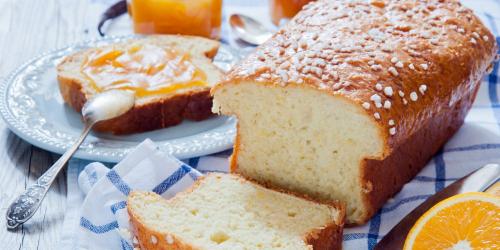To turn the salt shaker and ban the sugar bowl?
To wean gently
Fine salt and white sugar: I forget
I adopt gomasio
I drown the salt in the broth
I offer myself a pepper and spice mill
I flavor my sugar
I caramelize my vegetables
I season at the end
I play it creatively
I cook in ... deceit!
I mix fruit with salty dishes
Focus on salt and sugar
God made the food, the devil the seasoning, "said James Joyce.
Salt and sugar spice up our daily meals, excite our taste buds and exalt the flavors.
Impossible to live without: for our pleasure and our well-being.
Thus, salt, more precisely the sodium that composes it, regulates our blood pressure and our water balance. As for sugar, once converted into glucose, it is the fuel for our muscles and our neurons.
But too much salt and too much sugar saturate our taste buds, hide and ruin the taste of food and harm our health: high blood pressure, stroke, cardiovascular disease, diabetes ...
To turn the salt shaker and ban the sugar bowl?
The World Health Organization recommends a consumption of 5 g of salt per day: a simple teaspoon. However, the average consumption of the French exceeds 8 g and, for some, the 12 g.
In addition, since 1960, the annual consumption of sugar has increased from 20 to 35 kg per capita, and the consumption of sweet products (cakes, candy bars, sodas ...) from 1 to 14 kg per inhabitant. Only it is not the flower of salt that one sprinkles on a tomato, nor the sugar which softens the coffee which pose problem.
These pounds of salt and sugar are hidden: 75% of our excesses come from pre-cooked dishes and desserts - peas and canned ravioli, soups and industrial sauces, canned pizzas, biscuits and rusks.
So, to be sure not to add to our little homemade dishes, all our tips to stay light with these two essential cooking.
To wean gently
Basic rule: never salt or sweeten before tasting. To reduce the quantities, we go gradually.
By lowering the salt every 2 to 3 days, we get totally disembodied in 4 to 6 weeks, even if we had the heavy hand.
For sugar in the recipes, you can go step by step to accustom your palate to the new flavor less loaded with sugar. The easiest: start with the chocolate cakes. "Remove 20% sugar from your chocolate cakes," advises Perla Servan-Schreiber (see "We read"), because a good cake, it's first of all the scent of chocolate, its mellowness, its bitterness. Never dominant, sugar enhances the flavor of chocolate. "
And to enhance the sweet sensation, you can use salted butter.
Fine salt and white sugar: I forget
In fact, these are two products whose refining has removed minerals, while unrefined salts or complete sugars still having their nutrients, salt and suck less.
An unrefined salt contains 85% sodium against 95% in a fine salt. We have the choice: Fleur de sel (Camargue, Guérande, Ile de Ré), pink Himalayan salt, Persian blue, Hawaiian black, smoked Maldon ...
Of great taste delicacy and rich in minerals and trace elements. White sugar is 99.7% sucrose whereas in the whole sugar, the content varies from 74 to 92% and it brings a liquorice note. The sweetening power is the same. P
for other "sugars" it is superior. Thus, fructose powder with a fruity taste. We put 50 g in a recipe where it would take 100 g of white sugar. To try too: honey, maple syrup, agave, birch sugar ...
I adopt gomasio
In the recipes of salty dishes, you can trade its salt against this mixture of sesame seeds and sea salt, sold in the organic department. You can even make it yourself: 2/3 of white sesame roasted (in the pan, dry, over low heat, until it turns pale) and 1/3 of coarse sea salt. Before mixing, half of the grilled sesame is crushed with mortar, mixed with the salt and the remaining whole sesame is added. Store in a tight bottle.
I drown the salt in the broth
As Michel Guérard *, 3-star chef says: "Broths give flavor and make the use of salt more reasonable. "
From vegetables, fish or meat, you can season sauces, vinaigrettes, soups, purees, poach foods that receive the aromas.
How to use: simmer 15 to 20 min an assortment of vegetables in the water (the quantity depends on the strong one that one wants).
Filter, keep cool. For a chicken broth: immerse the carcass of a chicken in 2 l of water and simmer 30 min, filter, keep cool.
* Author of "Essential Slimming, Great Health Cooking", ed. Albin Michel.
I offer myself a pepper and spice mill
In the role of flavor enhancers, aromatic herbs, fragrant spices and exotic peppers play the stars.
Without calories and fabulous virtues (anti-inflammatory, antioxidant, antibiotic, antiviral, tonic, stimulant ... and sometimes appetite suppressant), they come raw vegetables and cooked vegetables, meat, fish and shellfish, eggs, soups, pasta and ... desserts! It would be a shame to do without it.
Too bad to sacrifice some of their aromas. By opting for a mill, you can grind at the last minute and aromas (very volatile) are still very present.
We can also choose the grind. On a meat, for example, one uses a big grain whereas for a sauce or vegetables one opts for spices finely ground. And salt becomes useless.
I flavor my sugar
With orange or vanilla.
We put less and because the flavor is stronger. P
make an orange bio, take the zest without the skin (flesh) white, dry (oven at 70 ° C), mix it finely before mixing with sugar. For vanilla, pick up a pod that has been drained of its seeds (after making a rice pudding, for example), dry it on a paper towel, in the air.
When dry, stiff and brittle, mix with sugar. These two sugars are kept in well closed bottles.
I caramelize my vegetables
To not salt carrots, turnips and other pumpkins, they can be gently caramelized.
In the oven, in a casserole or a frying pan (covered), they are put on low heat (about 100 ° C depending on the size of the pieces) with a little olive oil, but without water. Under the effect of heat, the vegetables will caramelize while their juice will gradually express themselves and the taste will be concentrated.
A turn of pepper mill and voila.
I season at the end
To develop all the aromas, it is better to sprinkle sugar and salt at the end of cooking: on a fish fillet (salt), or in a thin and crunchy layer on a crème brûlée (sugar).
Thierry Marx *, the Michelin-starred chef, replaces fine salt with salt crystals to sprinkle "at the moment of tasting. In the mouth, it will melt gradually and season food longer, "he says.
* Co-author with Dr. Jean-Michel Cohen of "Good! », Ed. Flammarion.
I play it creatively
Fruit-based desserts (salads, compotes ...) do not need a sugar addition, but can be brightened with raisins (soaked in rum) and roasted pine nuts.
In cakes and mellow, we can remove 15% of white sugar. As soon as they leave the oven, they are brushed with honey or jam, adding a little alcohol. For chocolate pastries, choose dark chocolate (70% minimum) and associate a spice (cinnamon, ginger, Espelette pepper ...).
I cook in ... deceit!
Play on the border of salt and acid, as the taste buds of these flavors touch each other on the edge of the tongue.
A hint of acidity (white wine, lemon, tomato, vinegar) in sauces and pickles will be enough to suggest the salt.
You can use fruits like vegetables: baked apples, poached pears, roasted peaches, melon and grilled pineapple make it almost impossible to do without salt.
I mix fruit with salty dishes
Parma ham and melon, pear and cheese ... fruits (such as vegetables, herbs and spices) contain potassium.
Studies show that even if we reduce our sodium intake (salt), blood pressure drops further if potassium intake increases.
The potassium / sodium ratio is therefore very important in the control of hypertension and cardiovascular diseases.
We do not forget to associate salty products and foods rich in potassium.


